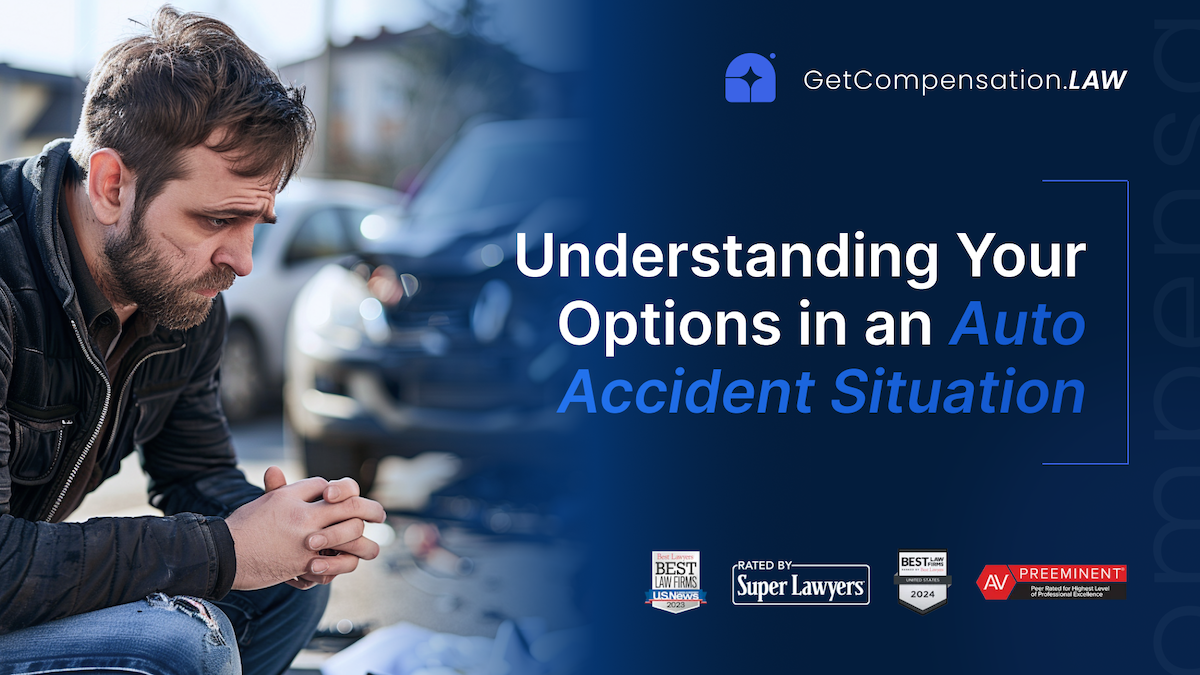
Third-Party Liability in Workplace Injuries: When Workers’ Compensation Isn’t the Only Option
Learn how injured workers may pursue third-party liability claims against equipment manufacturers, subcontractors, or property owners in addition to workers’ compensation benefits.
Our Network of Attorneys Are Recognized by the Best
For most employees injured on the job, workers’ compensation is the first and only form of relief they think of. It covers medical bills and part of lost wages without requiring proof of fault. But while workers’ comp is valuable, it also has strict limits. It does not pay for pain and suffering, emotional distress, or the full scope of lost income.
What many injured workers don’t realize is that workers’ compensation isn’t always the end of the story. In many cases, someone outside your employer—a manufacturer, property owner, or subcontractor—played a role in your accident. When that happens, you may have the right to bring a third-party liability claim, potentially unlocking far greater compensation.
At GetCompensation.law, we connect injured employees with top trial attorneys who know how to handle both workers’ comp and third-party claims. This dual approach ensures workers aren’t leaving money on the table after a devastating workplace injury.
What Is Third-Party Liability?
Third-party liability arises when an entity other than your direct employer is legally responsible for your injury. Unlike workers’ compensation, which is a no-fault system, third-party claims require proving negligence, recklessness, or product defect.
The trade-off? If successful, these lawsuits can recover damages workers’ comp doesn’t cover—such as pain and suffering, loss of enjoyment of life, and punitive damages in extreme cases. For many workers, especially those with severe or life-changing injuries, third-party claims can mean the difference between financial struggle and real recovery.
Common Examples of Third-Party Liability in Workplace Injuries
Third-party claims are surprisingly common in workplace accidents. Some of the most frequent scenarios include:
- Defective equipment or machinery: When a saw blade, scaffold, or safety harness fails, the manufacturer or distributor may be liable under product liability laws.
- Negligent subcontractors or contractors: On construction sites or multi-employer projects, one contractor’s careless conduct can injure another company’s worker.
- Unsafe premises: If a landlord, property manager, or outside company fails to maintain safe conditions (such as icy walkways, faulty wiring, or unsafe stairwells), they can be held responsible.
- Vehicle accidents: Delivery drivers, warehouse staff, or field workers may be injured in traffic accidents caused by other motorists. Those negligent drivers can be sued in addition to pursuing workers’ comp.
- Toxic exposure: When workers are exposed to harmful chemicals supplied by third-party vendors, manufacturers of those substances may face liability.
Each of these situations highlights how responsibility often extends beyond the employer, opening the door to additional legal remedies.
Key Differences Between Workers’ Compensation and Third-Party Lawsuits
Understanding the distinction between workers’ comp and third-party claims is critical:
- Workers’ Compensation
- No need to prove fault.
- Provides medical care and partial wage replacement.
- Does not cover pain and suffering or full lost wages.
- Process is administrative, often faster but limited.
- Third-Party Lawsuit
- Requires proving negligence, defect, or fault.
- Can recover a wider range of damages, including pain and suffering, full wage loss, future earnings, emotional distress, and sometimes punitive damages.
- May take longer but often results in significantly higher payouts.
The ability to combine both benefits makes third-party claims extremely valuable—but also legally complex.

The Role of Evidence in Third-Party Cases
Building a strong third-party claim requires comprehensive evidence. Some of the most important elements include:
- Accident investigation reports (from OSHA, workplace safety inspectors, or private investigators).
- Photographs and videos of the accident scene and defective equipment.
- Preservation of defective products or machinery, which must be secured before they are repaired or discarded.
- Expert testimony, such as engineers for equipment defects or safety experts for construction site hazards.
- Medical evidence that links the workplace accident to ongoing injuries and limitations.
Insurers and third parties will fight hard to limit exposure. A skilled attorney ensures evidence is collected quickly and preserved properly—before it disappears.
How Third-Party Claims Affect Workers’ Compensation Benefits
Many injured workers worry that pursuing a third-party claim could jeopardize their workers’ compensation benefits. The truth is more nuanced.
- You are still entitled to workers’ compensation benefits regardless of a third-party claim.
- If your third-party lawsuit succeeds, your workers’ comp insurer may have a right of subrogation—meaning they can recover some of what they paid you from your settlement.
- A knowledgeable lawyer can negotiate to reduce this reimbursement, ensuring you walk away with the maximum net recovery.
The coordination between workers’ comp and third-party liability is one of the most important reasons to have legal representation on both fronts.
Why Legal Representation Is Essential
Juggling a workers’ comp claim and a third-party lawsuit at the same time is complex. Insurance companies have lawyers, third-party defendants have lawyers—and without your own, you’re outmatched.
An experienced attorney will:
- Identify all possible third parties that may share liability.
- Handle the technical requirements of both workers’ comp and civil litigation.
- Maximize recovery by balancing benefits, settlements, and subrogation rights.
- Prepare cases for trial when settlement isn’t enough.
At GetCompensation.law, we work only with trial-tested firms that don’t shy away from going to court against powerful insurance companies, contractors, and product manufacturers.
Real-World Examples of Third-Party Liability
Consider how third-party liability works in practice:
- Construction accident: A worker falls when a scaffold collapses. Workers’ comp covers medical bills, but a third-party lawsuit against the scaffold manufacturer results in a multimillion-dollar settlement for pain, suffering, and permanent disability.
- Delivery driver crash: While making deliveries, a worker is hit by a negligent driver. Workers’ comp covers lost wages, but the lawsuit against the at-fault driver recovers full compensation for future earnings and emotional distress.
- Toxic exposure: A warehouse employee becomes ill from inhaling fumes of a cleaning solvent. A third-party suit against the chemical supplier brings justice and recovery beyond the limits of workers’ comp.
These examples demonstrate the life-changing difference third-party liability claims can make.
Conclusion
Workers’ compensation provides an important safety net, but it isn’t always the only option for injured workers. When a third party is responsible—whether it’s a careless subcontractor, a negligent driver, or a defective product manufacturer—additional claims may be available.
By pursuing both workers’ comp and third-party liability, injured employees can recover the full value of their losses, not just a fraction.
At GetCompensation.law, we connect workers with top-ranked attorneys who understand these complex claims and fight to maximize every dollar of recovery. If you’ve been hurt on the job, don’t assume workers’ comp is your only path—explore every legal avenue with the help of an experienced lawyer.




